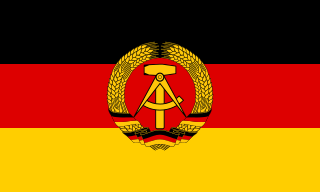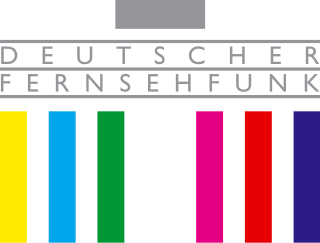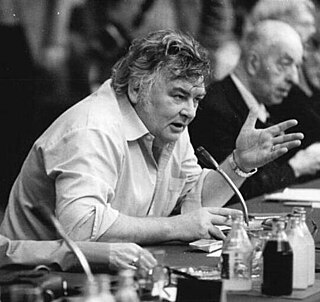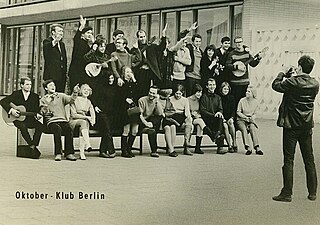
East Germany, officially the German Democratic Republic, was a country in Central Europe that existed from its creation on 7 October 1949 until its dissolution on 3 October 1990. Until 1989, it was commonly viewed as a communist state, and it described itself as a socialist "workers' and peasants' state". Before the establishment, its territory was administered and occupied by Soviet forces with the autonomy of the native communists following the Berlin Declaration abolishing German sovereignty in World War II; when the Potsdam Agreement established the Soviet-occupied zone, bounded on the east by the Oder–Neisse line. The GDR was dominated by the Socialist Unity Party of Germany (SED), a communist party from 1949 to 1989, before being democratized and liberalized under the impact of the Revolutions of 1989 against the communist states, helping East Germany be united with the West. Unlike West Germany, SED did not see its state as the successor of the German Reich (1871–1945) and abolished the goal of unification in the constitution (1974). Under the SED rule, GDR was often judged as a Soviet satellite state; most scholars and academics described it as a totalitarian regime.

The Free German Youth is a youth movement in Germany. Formerly, it was the official youth movement of the German Democratic Republic (GDR) and the Socialist Unity Party of Germany.

Manfred Gerlach was a German jurist and politician, and the longtime leader of the East German Liberal Democratic Party. He served as Chairman of the Council of State and was thus head of state of East Germany from 6 December 1989 to 5 April 1990.
Junge Welt is a German daily newspaper, published in Berlin. The jW describes itself as a left-wing and Marxist newspaper. German authorities categorize it as a far-left medium hostile to the constitutional order.

The Ernst Thälmann Pioneer Organisation, consisting of the Young Pioneers and the Thälmann Pioneers, was a youth organisation of schoolchildren aged 6 to 13 in East Germany. They were named after Ernst Thälmann, the former leader of the Communist Party of Germany, who was executed at the Buchenwald concentration camp.

Margot Honecker was an East German politician who was an influential member of that country's Communist government until 1989. From 1963 until 1989, she was Minister of National Education of the GDR. She was married to Erich Honecker, the leader of East Germany's ruling Socialist Unity Party from 1971 to 1989 and concurrently from 1976 to 1989 the country's head of state.

ChristianFührer (help·info) was a Protestant pastor and one of the leading figures and organisers of the 1989 Monday demonstrations in East Germany which finally led to German reunification and the end of the GDR in 1990.

Deutscher Fernsehfunk was the state television broadcaster in the German Democratic Republic from 1952 to 1991.

The Monday demonstrations were a series of peaceful political protests against the government of the German Democratic Republic (GDR) that took place in towns and cities around the country on various days of the week from 1989 to 1991. The Leipzig demonstrations, which are the most well known, took place on Mondays. The protests are conventionally separated into five cycles.

Günter Kochan was a German composer. He studied with Boris Blacher and was a master student for composition with Hanns Eisler. From 1967 until his retirement in 1991, he worked as professor for musical composition at the Hochschule für Musik "Hanns Eisler". He taught master classes in composition at the Academy of Music and the Academy of Arts, Berlin. He was also secretary of the Music Section of the Academy of Arts from 1972 to 1974 and vice-president of the Association of Composers and Musicologists of the GDR from 1977 to 1982. Kochan is one of eleven laureates to have been awarded the National Prize of the GDR four times. In addition, he received composition prizes in the US and Eastern Europe. He became internationally known in particular for his Symphonies as well as the cantata Die Asche von Birkenau (1965) and his Music for Orchestra No. 2 (1987). His versatile oeuvre included orchestral works, chamber music, choral works, mass songs and film music and is situated between socialist realism and avant-garde.

Erik Neutsch was one of the most successful writers in East Germany.

Ingeburg "Inge" Lange was an East German politician.
Hermann Weber was a German historian and political scientist. He has been described as "the man who knew everything about the German Democratic Republic".

Konrad Naumann was an East German politician. He built his career; initially, in regional politics, but between 1966 and 1986 he was important nationally as a member of the Central Committee of the country's ruling SED (party).
Petra Lux is a German civil rights activist, journalist, novelist, Taichi and Qigong teacher.
Marlies Deneke is a German politician.

Horst Pehnert was an East German journalist and party official who in 1976 became a long-standing deputy Minister for Culture - effectively the minister for film and cinema.
Katrin Hattenhauer is a German painter and civil rights activist. In the late 1980s she was a member of the GDR-opposition movement. On 4 September 1989 she demonstrated "For an Open Country with Free People", marking the beginning of the Monday demonstrations in Leipzig. Her paintings and social sculptures have been exhibited in Europe.
Harry Weibel is a German historian. His main topics are neo-Nazism, right-wing extremism and antisemitism in the GDR and racism in Germany from 1945 to the present.

Oktoberklub, initially known as the Hootenanny-Klub Berlin, was a political music group from the German Democratic Republic (GDR). The musical style of the group was a mixture of folk, chanson and rock music. Founded in 1966, the group disbanded in 1990. Occasional performances followed in 2002 and 2007.













